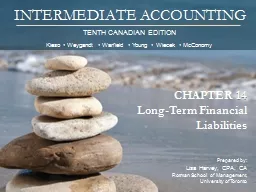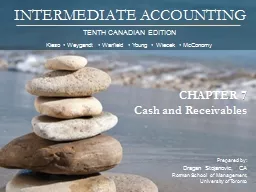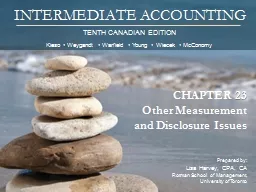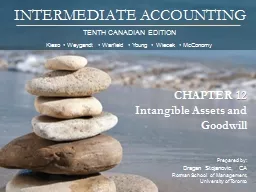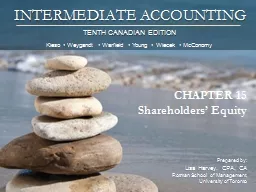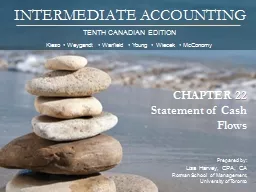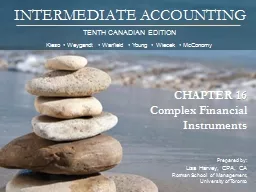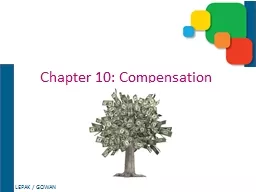PPT-14 After studying this chapter, you should be able to:
Author : marina-yarberry | Published Date : 2017-12-10
Understand the nature of longterm debt financing arrangements Understand how longterm debt is measured and accounted for Understand when longterm debt is recognized
Presentation Embed Code
Download Presentation
Download Presentation The PPT/PDF document "14 After studying this chapter, you shou..." is the property of its rightful owner. Permission is granted to download and print the materials on this website for personal, non-commercial use only, and to display it on your personal computer provided you do not modify the materials and that you retain all copyright notices contained in the materials. By downloading content from our website, you accept the terms of this agreement.
14 After studying this chapter, you should be able to:: Transcript
Understand the nature of longterm debt financing arrangements Understand how longterm debt is measured and accounted for Understand when longterm debt is recognized and derecognized including how to account . Understand inventory from a business perspective.. Define inventory from an accounting perspective.. Identify which inventory items should be included in ending inventory.. Identify the effects of inventory errors on the financial statements and adjust for them.. Understand . why earnings per share (EPS) is an important number.. Understand . when and how earnings per share must be presented, including related disclosures.. Calculate . earnings per share for companies with a simple capital structure.. Understand cash and accounts receivable from a business perspective.. Define financial assets, and identify items that are considered cash and cash equivalents and how they are reported.. Define receivables and identify the different types of receivables from an accounting perspective.. Understand . the importance of disclosure from a business perspective.. Review . the full disclosure principle and describe problems of implementation.. Explain . the use of accounting policy notes in financial statement preparation.. Understand . the importance of intangible assets and goodwill from a business perspective.. Define and describe the characteristics of intangible assets.. Identify and apply the recognition and measurement requirements for purchased intangible assets.. Discuss the characteristics of the corporate form of organization, rights of . shareholders, and . different types of shares.. Explain . how to account for the issuance, reacquisition, and retirement of shares, stock . Indicate the usefulness and describe the main components of a conceptual framework for financial reporting.. Identify the qualitative characteristics of accounting information.. Define the basic elements of financial statements.. Understand . the importance of cash flows from a business perspective.. Describe . the purpose and uses of the statement of cash flows.. Define . cash and cash equivalents.. Identify . the major classifications of cash flows and explain the significance of each classification.. Understand . the nature of investments including which types of companies have significant investments.. Explain and apply the cost/amortized cost model of accounting for investments.. Explain and apply the fair value through net income model of accounting for investments.. Understand . what derivatives are and how they are used to manage risks.. Understand . how to account for derivatives.. Analyze . whether a hybrid/compound instrument issued for financing purposes . represents a . Chapter 10: Compensation Objectives After reading this chapter, you should be able to: Describe the purpose of compensation. Discuss the importance of equity relative to a firm’s compensation decisions. RED HOT ROOTS LESSON 44 ABLE, IBLE, IL, ILE ABLE, IBLE ABLE, CAN DO ENJOYABLE IL, ILE CAPABLE OF BEING, FRAGILE LIKE SUFFIXES AND MEANINGS (ADJ) POLITE AND RESPECTFUL; ACTING WITH COURTESY AND CIVILITY Keyboard. (Encoding). Disk. (Storage). Monitor. (Retrieval. Sequential Process. Studying memory. Memory. Persistence of learning over time through the encoding, storage, and retrieval of information. 5 Research-ByEdward KangToo often people imagine that long hours of studying are the best path to being a model straight-A student Yetresearch showsthat highly successful students actually spend less
Download Document
Here is the link to download the presentation.
"14 After studying this chapter, you should be able to:"The content belongs to its owner. You may download and print it for personal use, without modification, and keep all copyright notices. By downloading, you agree to these terms.
Related Documents

